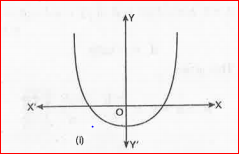Which of the following pairs of linear equations has unique solution, no solution, or infinitely many solutions. In case there is a unique solution, find it by using cross multiplication method. : x-3y-3=0 , 3x-9y-2=0.Solution in Punjabi
Step by step video & image solution for Which of the following pairs of linear equations has unique solution, no solution, or infinitely many solutions. In case there is a unique solution, find it by using cross multiplication method. : x-3y-3=0 , 3x-9y-2=0. by Maths experts to help you in doubts & scoring excellent marks in Class 10 exams.
Topper's Solved these Questions
- BOOK - MBDCHAPTER - PAIR OF LINEAR EQUATIONS IN TWO VARIABLESEXERCISE - EXERCISE183videos
PAIR OF LINEAR EQUATIONS IN TWO VARIABLES
- BOOK - MBDCHAPTER - INTRODUCTION TO TRIGONOMETRYEXERCISE - EXERCISE176videos
INTRODUCTION TO TRIGONOMETRY
- BOOK - MBDCHAPTER - POLYNOMIALSEXERCISE - EXERCISE51videos
POLYNOMIALS
Similar Questions
4 chairs and 3 tables cost ? 2100 and 5 chairs and 2 tables cost ? 1750. Represent this situation algebraically and graphically.
04:22View SolutionIn △ABC, right angled at A, if AB = 12 cm, AC = 5 cm and BC = 13 cm, find all the six trigonometric ratios of angle B.
02:34View SolutionThe graphs of y = p (x) are given in figure below, for some polynomials p (x). Find the number of zeroes of p (x), in each case.
 .02:25View Solution
.02:25View SolutionWhich of the following pairs of linear equations has unique solution, no solution, or infinitely many solutions. In case there is a unique solution, find it by using cross multiplication method.(i)x−3y−3=0;3x−9y−2=0
04:36View SolutionWhich of the following pairs of linear equations has unique solution, no solution or infinitely many solutions. In case there is unique solution, find it by using cross-multiplication method x – 3y – 3 = 0, 3x – 9y – 2 = 0
02:33View SolutionWhich of the following pairs of linear equations has unique solution, no solution, or infinitely many solution, no solution, or infinitely many solutions. In case there is a unique solution, find it by using cross multiplication method.
x−3y−3=0and3x−9y−2=002:43View SolutionWhich of the following pairs of linear equations has unique solution, no solution, or infinitely many solution, no solution, or ininitely many solutions. In case there is a unique solution, find it by using cross multiplication method.
x−3y−7=0and3x−3y−15=003:05View SolutionWhich of the following linear equations has a unique solution or an infinite number of solutions? What's the solution? If there is any solution, find it by a multiplication method. x-3y-3 =0 And 3x- 9y -2 =0
02:04View SolutionWhich of the followings pairs of linear equations has unique solution, no solution, or infinitely many solutions. In case there is a unique solution, find it by using cross multiplication method.
x−3y−3=0
3x−9y−2=004:06View SolutionWhich of the followings pairs of linear equations has unique solution, no solution, or infinitely many solutions. In case there is a unique solution, find it by using cross multiplication method.
2x+y=5
3x+2y=802:42View SolutionWhich of the followings pairs of linear equations has unique solution, no solution, or infinitely many solutions. In case there is a unique solution, find it by using cross multiplication method.
3x−5y=20
6x−10y=4003:16View SolutionWhich of the followings pairs of linear equations has unique solution, no solution, or infinitely many solutions. In case there is a unique solution, find it by using cross multiplication method.
x−3y−7=0
3x−3y−15=003:42View SolutionWhich of the following pairs of linear equations has a unique solution, no solution, or infinitely many solutions? In case, there is a unique solution, find it by using cross-multiplication method.
3x−5y=20
6x−10y=4002:35View SolutionWhich of the following pairs of linear equations has a unique solution, no solution, or infinitely many solutions. In case there is a unique solution, find it by using cross-multiplication method:
x−3y−3=0
3x−9y−2=004:31View SolutionWhich of the following pairs of linear equations has a unique solution, no solution, or infinitely many solutions. In case there is a unique solution, find it by using cross-multiplication method:
2x+y=5
3x+2y=805:46View Solution
